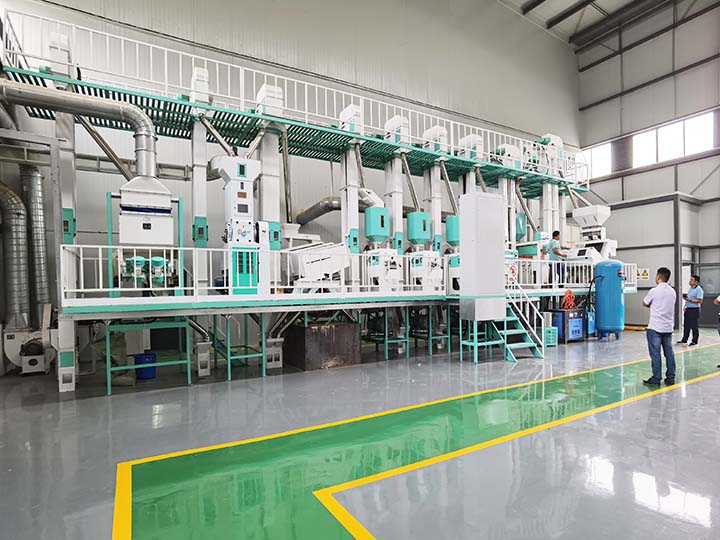The Rice Milling Story – From Paddy to White Rice
Rice is one of the most vital food grains in the world and is processed in rice mills according to international standards, keeping in mind the uniformity and basic quality of the grain. There are different rice milling equipment used to automatically process rice and to ensure maximum processing capacity in a shorter time.
“Symbolically contained in this thin slice of bread is the labor of plowing and sowing, harvesting and threshing, milling, packing, transporting, financing, selling, and packaging. Therein lies the industrial life of mankind.” – Wilford O. Cross

Introduction of rice milling
I think most of us have heard of rice milling. However, not many of us know what the word means. To understand it, we need to have a good understanding of the structure of rice grains. Rice grains have a tough outer layer called the husk. The husk cannot be digested by humans. The same goes for the bran, which is the tough outer layer of the rice grain. It is nutritious and rich in antioxidants. The hull and bran are removed by milling to produce white rice. (Brown rice contains bran.) The aim of the process is to produce white rice that is free of impurities and with as few broken grains as possible. The quality of the white rice obtained at the end of the milling process depends on the quality of the rice crop, the milling machinery, and the skills of the milling operator.

How does a modern rice milling machine work?
Modern rice milling machinery first removes impurities and foreign objects from the rice – first of all, dirt, straw, and stones. The husk is removed next. After the hulling process, a portion of the grain remains in the husk. These are sent back to the husk. Finally, the resulting brown rice is passed through a machine that removes the bran and yields white rice. There is more than one way to do this. Any broken rice grains are then discarded. Selling all-white grains with broken grains implies a compromise in quality. Good quality rice should contain as few broken grains as possible.
Multi-stage Commercial Rice Milling Process
1. Rice pre-processing: This process essentially removes unwanted foreign matter such as unfilled and uneven grains, impurities, sand, straw, clay, etc. The rice is passed through a series of suction systems and sieves.
2. Rice de-stoning: Selenium de-stoning is the process of separating the rice grains from the stones. This process works on the principle of gravity, where the rice is the lighter stone and fluidized into an air gradient, leaving the heavier stone behind.
3. Rice hulling/: Based on the centrifugal principle, the hulling machine removes the hull layer from the rice grain.
4. Rice paddy separation: The surface of the rice grain is smoother compared to paddy grain. This difference in texture is used to distinguish brown rice from rice grain.
5. Rice whitening: Rice whitening is the removal of bran and bacteria from brown rice by an effective suction system
6. Rice Polishing: This step consists of removing the remaining bran particles and then polishing the outside of the grain with a humidified rice polisher.
7. Rice length grading: In this process, broken rice is removed from the whole rice, and small and large head tucks are separated from the head rice.
8. Rice mixing: In this process, the head rice is mixed with a predetermined number of brokers according to the customer’s requirements
9. Rice packaging: This is the final step of rice processing. And also the last step before the rice is placed on the shelf.
Conclusion
So the next time you tear open a bag of amazing white rice, you’ll know that a lot of hard work went into it – from the farmers who grew the crop to the extensive milling process …… appreciate it!
TAIZY Machinery is a one-stop rice milling machine supplier. We have been involved in the research, design, manufacturing, and marketing of a full range of rice processing equipment. If you are looking for a reliable rice mill machine or other rice processing equipment, we are always here to help your rice business.
